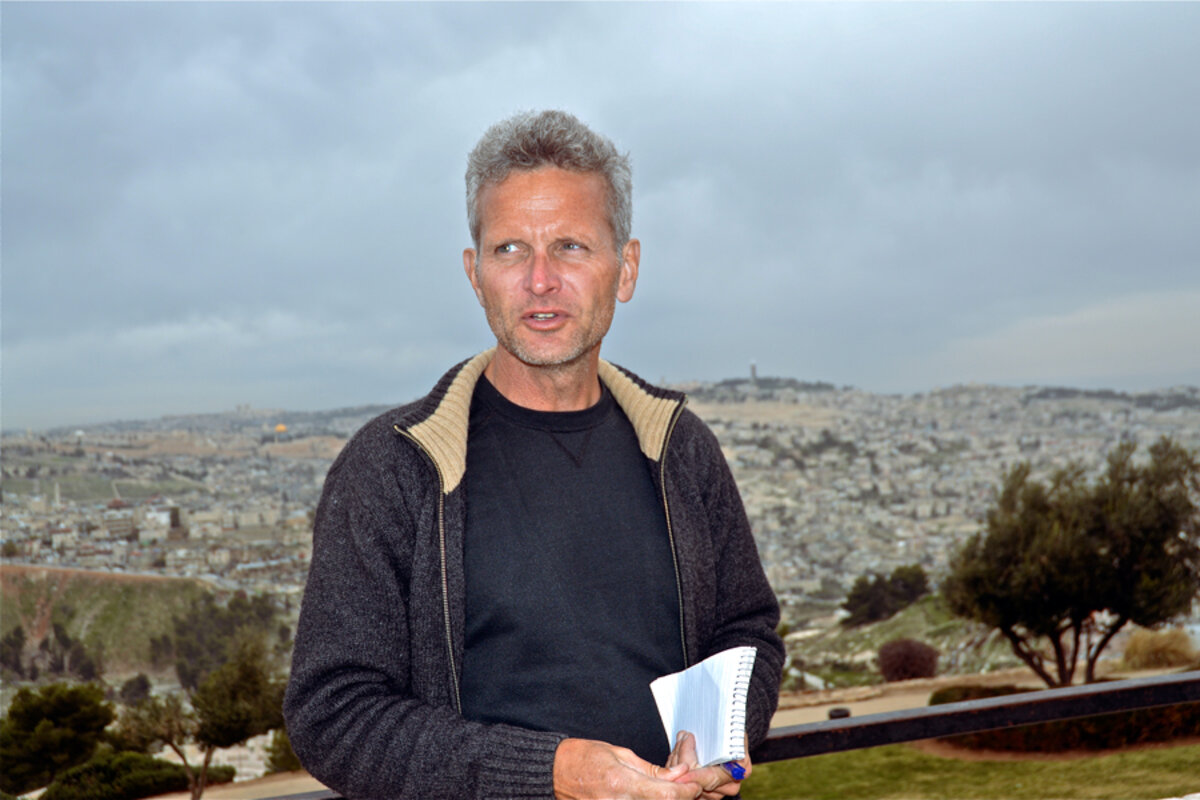Seven years around the world: Journalist traces the path from Eden
Loading...
| Jerusalem
Since beginning a seven-year walk around the world in Ethiopia last year, American Paul Salopek's days have been filled with the unusual: Pre-ordering alfalfa bale drops for his camel, being held at gunpoint by human traffickers in Djbouti, venturing on foot into areas of Saudi Arabia where local Bedouin had never seen a white man.
He is traveling the earliest known path of human migration, across Asia and down through the Americas, aiming to end up in Tierra del Fuego at the tip of South America ().
Despite being a veteran foreign correspondent who covered years of war in Africa, Mr. Salopek has never taken on an assignment quite like this. But it’s a natural fit.
“This is a continuation of what I’ve been doing my whole life,” he told me last month, as we walked from the Bethlehem checkpoint through olive tree-studded hills into Jerusalem.
Salopek’s background is as unusual and fascinating as his global adventure, shedding light not only on the craft of journalism but also the art of connecting with people from vastly different backgrounds.
“People can tell in five minutes if you care about them. You can’t fake compassion," he says.
Salopek is almost impossible to interview because he’s so busy asking questions – and listening. But eventually it comes out that he spent much of his childhood in Mexico, and dropped out of high school, though he eventually got a degree in environmental biology from the University of California at Santa Barbara.��
He traipsed through various occupations – and landscapes – for years from ranching in Mexico to construction on Washington’s Bainbridge Island, to fishing boats in the Indian Ocean.
When he wasn’t working with his hands, he was reading: everything from Moby Dick to Blade Magazine. His love of reading turned into a love of writing, and he landed an internship at National Geographic after competing in a caption contest “almost as a lark.”
He left within a short time to work at the Chicago Tribune, where after only seven months on the job he was plucky enough to ask his editors for a year off to ride a mule 1,250 miles across Mexico.
They said OK.
That was 1999. Fifteen years and quite a few African war stories later, he’s on a much greater adventure, with the support of National Geographic, the Knight Foundation, Pulitzer Center for Crisis Reporting, and Project Zero at Harvard’s School of Education. He tends a “digital campfire” periodically on his website , which also provides educational resources. In addition, he files regular for National Geographic.��
It’s no small part of the challenge to juggle walking, blogging, writing, and fundraising. Once he partook in a conference call with 16 donors by satellite phone in Africa’s Great Rift Valley. All along the way, he’s been filling a growing stack of notebooks with the nuggets that will make the project worth funding to its completion. By the time he reached Jerusalem, they weighed 55 pounds.
But despite a year of preparation for the trek, Salopek takes little credit for the insights he’s gleaned. “It’s just nothing compared to the fragments people are carrying around in their head,” he says, rattling off a long list of local guides who have helped him along the way. “The whole objective is to work with local people who then become the windows to the place. Without someone with an intimate knowledge of landscape, I’d lose 90 percent of it.”





